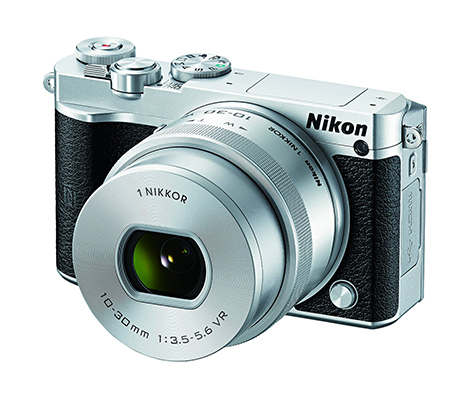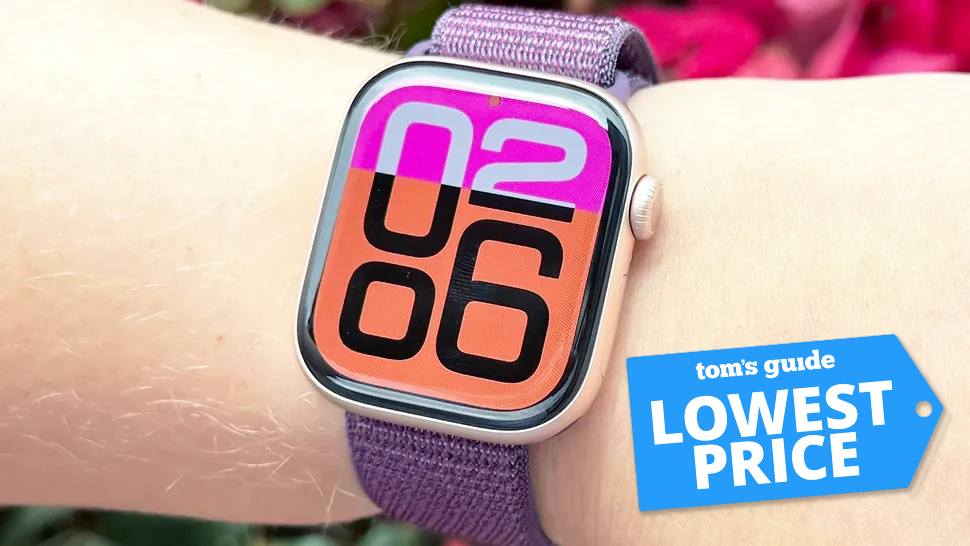Tom's Guide Verdict
Thanks to a new sensor and processor, the J5 is a very competitive mirrorless camera that's priced just right.
Pros
- +
Very good image quality Fast, accurate burst mode Built-in flash 1080/60p video Compact and lightweight
Cons
- -
No hot shoe for external flash Photos not as rich as those of larger-sensor competitors, weak battery life
Why you can trust Tom's Guide
Who it's for: Anyone who wants a very compact interchangeable lens camera — especially for shooting action, like running children.
A lightweight mirrorless camera, the Nikon 1 J5 has a new 1-inch sensor, processor and the ability to shoot video up to 1080p at 60 frames per second. Starting at $500 (with a 3x zoom lens), the J5 holds its own among entry-level competitors. In fact, this model is such an improvement that it can be mentioned in the same breath as bigger mirrorless cameras with the far-larger APS-C and Micro Four Thirds sensors — something I never would've said with previous Nikon 1 cameras.
Design: Petite and Old School
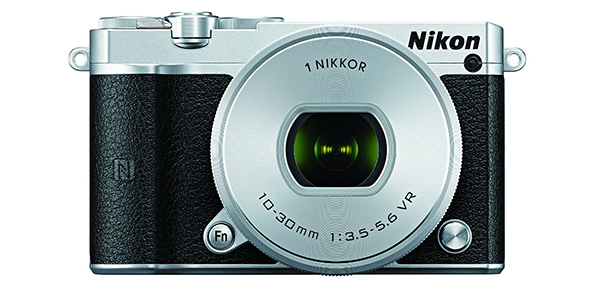
Thanks to their 1-inch sensors, Nikon 1 cameras are far smaller than other mirrorless cameras with interchangeable lenses. The J5 body measures 3.9 x 2.4 x 1.3 inches and weighs a scant 8.2 ounces. The camera has an old-school design vibe, especially the two-tone black-and-silver model I reviewed. (There's a choice of black, silver or white bodies.) The overall design is simple and clean, with well-placed and easily identifiable controls.
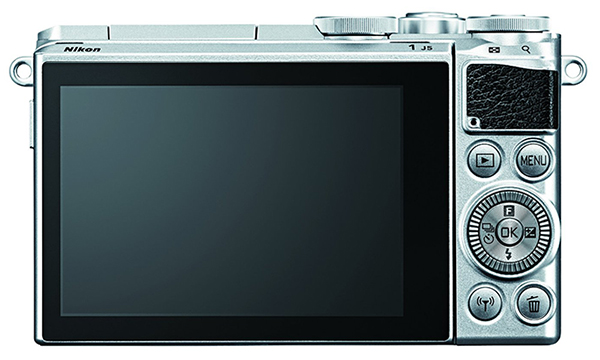
The basic kit comes with a 3x 10 to 30mm stabilized zoom, but additional lenses are available. By comparison, the 24MP Sony A5100 is $699 with a 16 to 50mm lens.
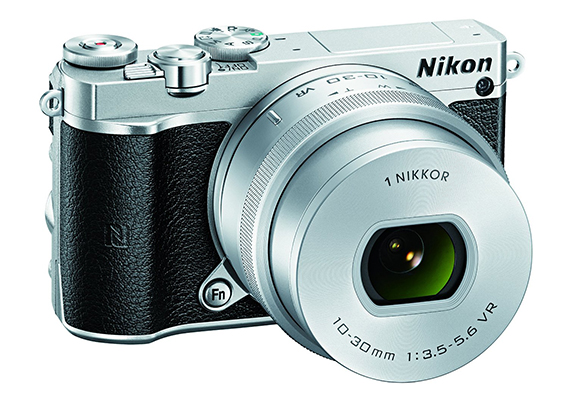
With its 3x zoom attached, the J5 is easy to tote around. While it won't fit in your pocket like a smartphone, there's really no need to attach the strap for stability when you're using the basic lens.
The camera also has a built-in flash, unlike some other mirrorless models (such as the Samsung NX500) that supply one as an add-on attachment. This is extremely convenient for those times you want to use the fill-flash setting. However, there's no shoe for an external flash.
Image Quality: Now Playing with the Big Boys
I admit to being underwhelmed by every Nikon 1 camera I've reviewed since the model line premiered in 2011. I must not have been the only critic, and Nikon has taken the criticism to heart, because it has completely revamped the imaging innards for the J5.
This model now has a 20.8MP 13.2 x 8.8mm backside illuminated (BSI) sensor — a technology that allows more light to reach the pixels — compared with the traditional-design, 18.4-megapixel sensor of the J4 (see review) and others in the lineup. BSI chips enable both faster shutter speeds and better images in low light.

A new Expeed 5A processor moves everything along at a rapid clip (up to 20 frames per second) and improves movie quality to 1080p/60 fps, and lets you shoot 4K video, albeit at a much slower frame rate (15 fps) than true 4K cameras such as the Samsung NX1 and NX500.
MORE: Best Cameras
Nikon states that the J5's burst rate is "faster than any DSLR on the market." It's a bold — and true — claim, with a caveat I'll explain below.
Although the J5's sensor is about one-third the size of the APS-C (24 x 16mm) type found in many other mirrorless cameras (and DSLRs), the photos I took were quite impressive, with accurate and rich colors.
Taken with the 10 to 30mm kit lens on a bright, sunny day, the J5 really delivered the goods.
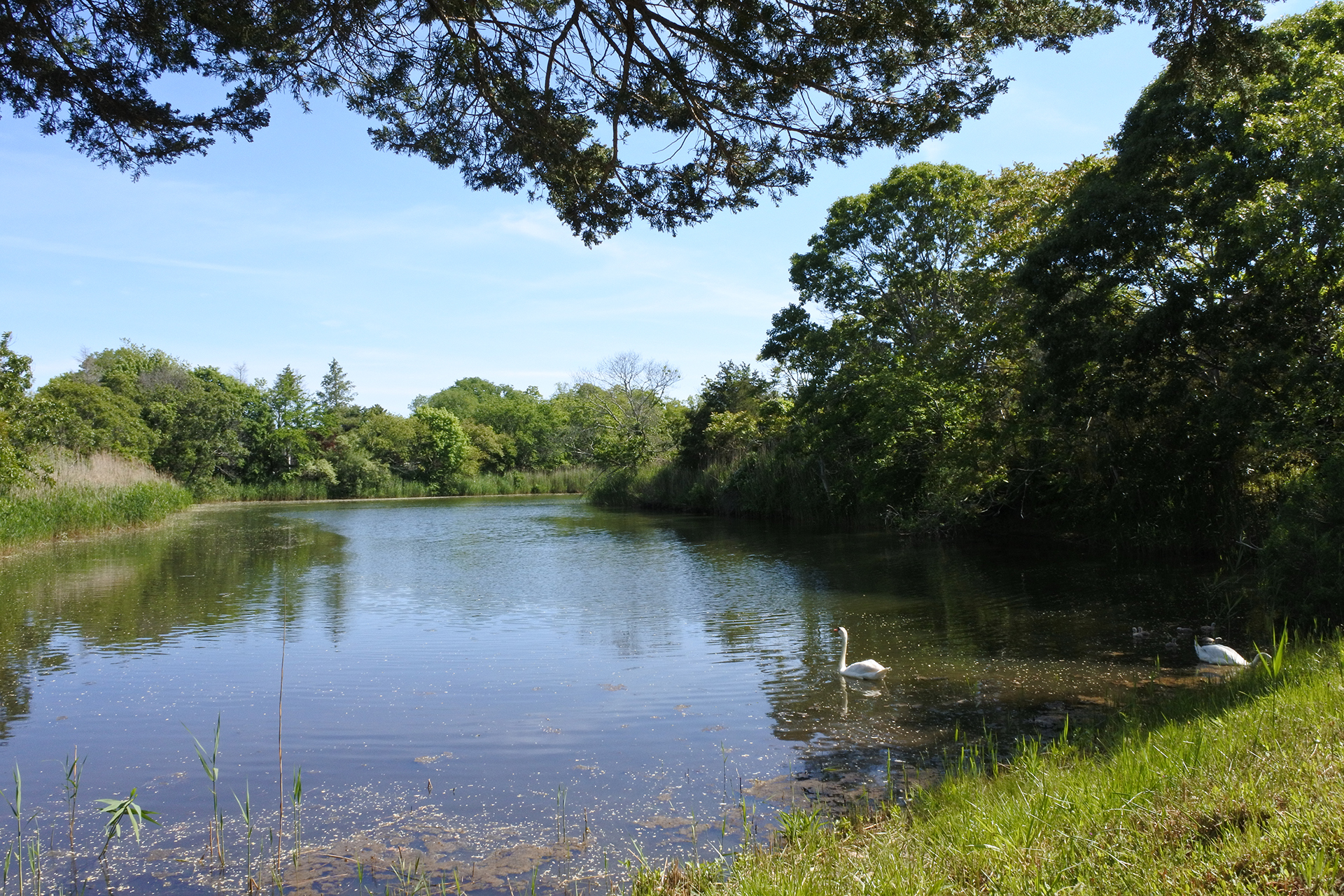
In addition to the 3x kit lens, I also tested the J5 with Nikon's 32mm prime lens, which is very sharp and capable. This blooming rhododendron was shot at f/2.8 aperture with the prime lens, leaving the focal plane tack-sharp, with a nice blurring effect surrounding it.

The Nikon 1 J5 has a native light-sensitivity range of ISO 160 to 12,800, typical for entry-level mirrorless cameras. The sensor worked well in my tests, with digital noise (graininess) not being noticeable until ISO 3,200. Higher settings could be used if the files aren't enlarged over 50 percent. I wouldn't choose the ISO 6,400 and 12,800 options with Noise Reduction enabled, since it softens the images too much. By default, the Nikon 1 J5 caps the Auto ISO range at 6,400. I'd keep that setting.
The following image was taken at ISO 400 at one-tenth of a second, highlighting the VR (image-stabilizing) capability of the kit lens to cancel out camera shake at such a slow shutter speed. The Nikon 1 J5 did a good job maintaining detail as well as color accuracy.
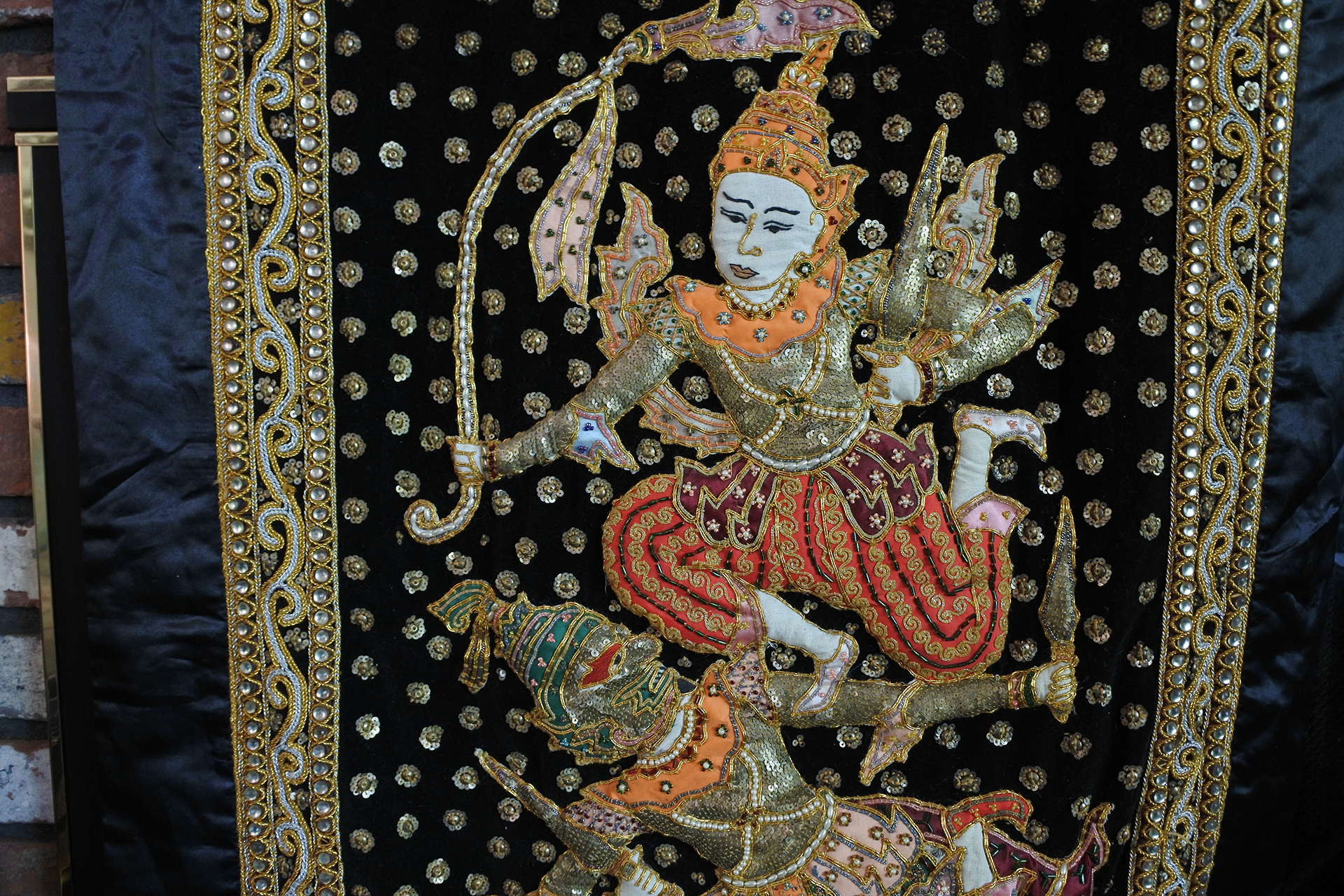
The image at ISO 6,400 showed serious softening. I'd avoid such ISO levels unless absolutely necessary.
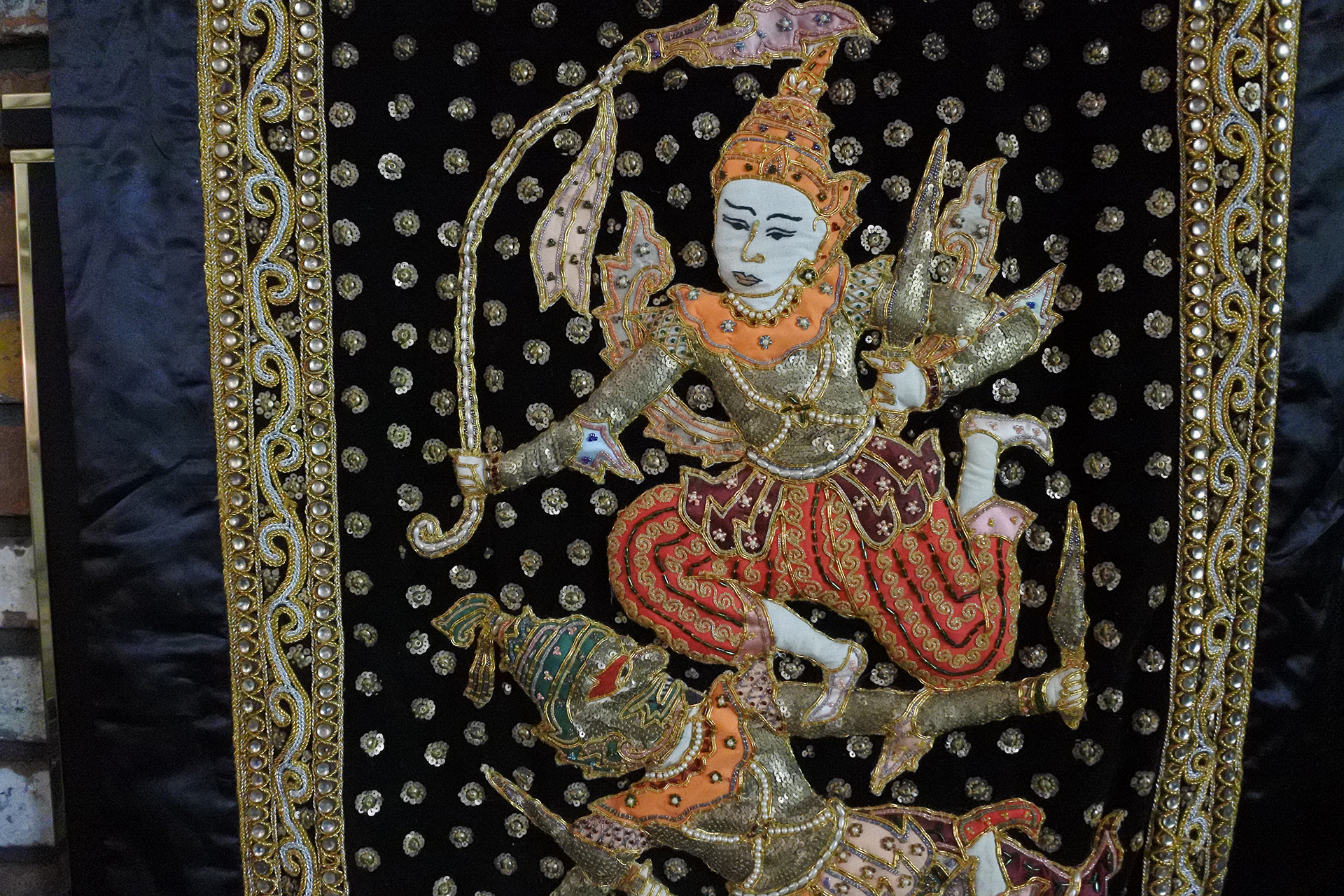
The Nikon 1 J5 has a built-in flash that comes in very handy. I took the first photo using available light.
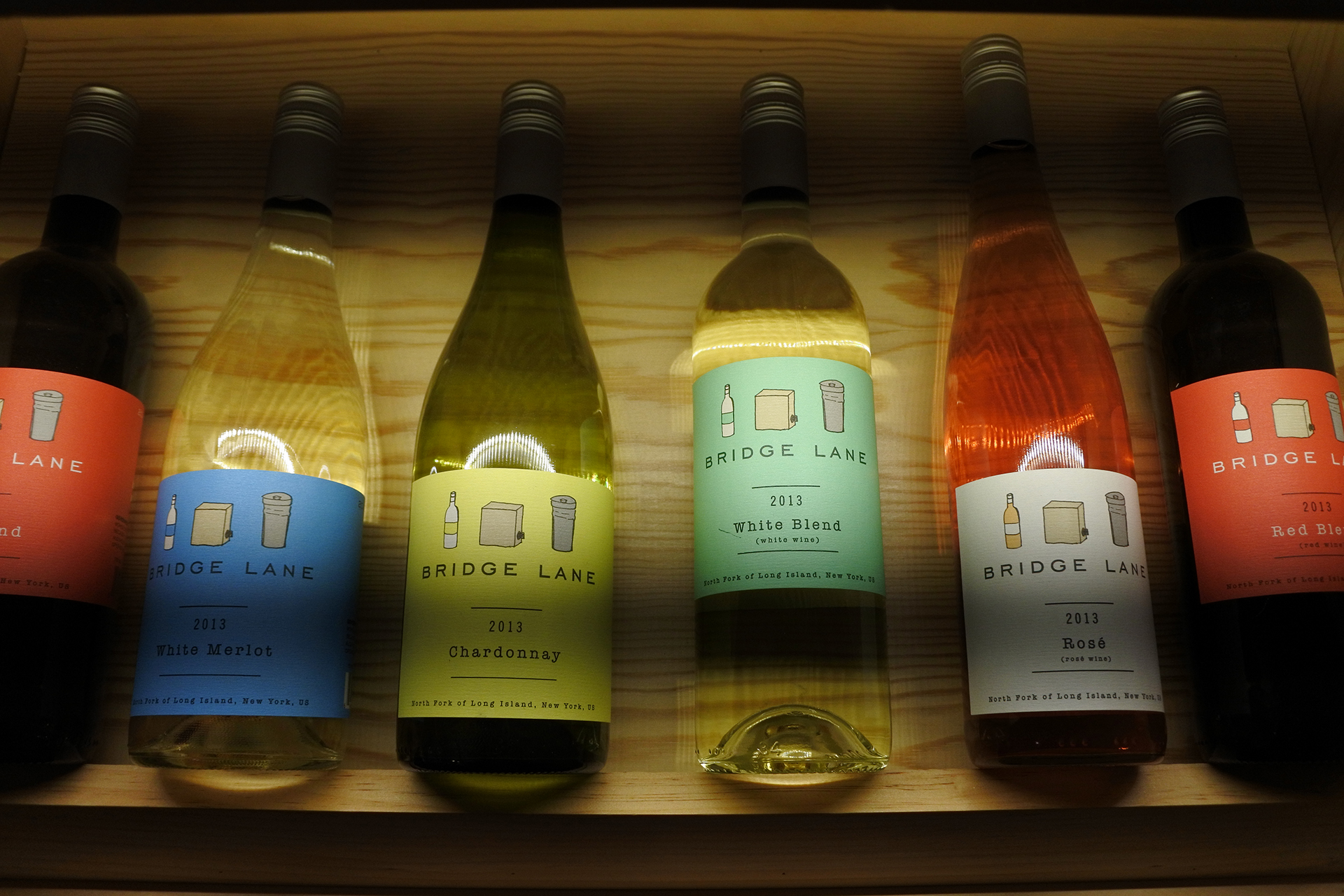
The shot of some wine bottles is OK, but with fill-flash, the results are dramatically better.
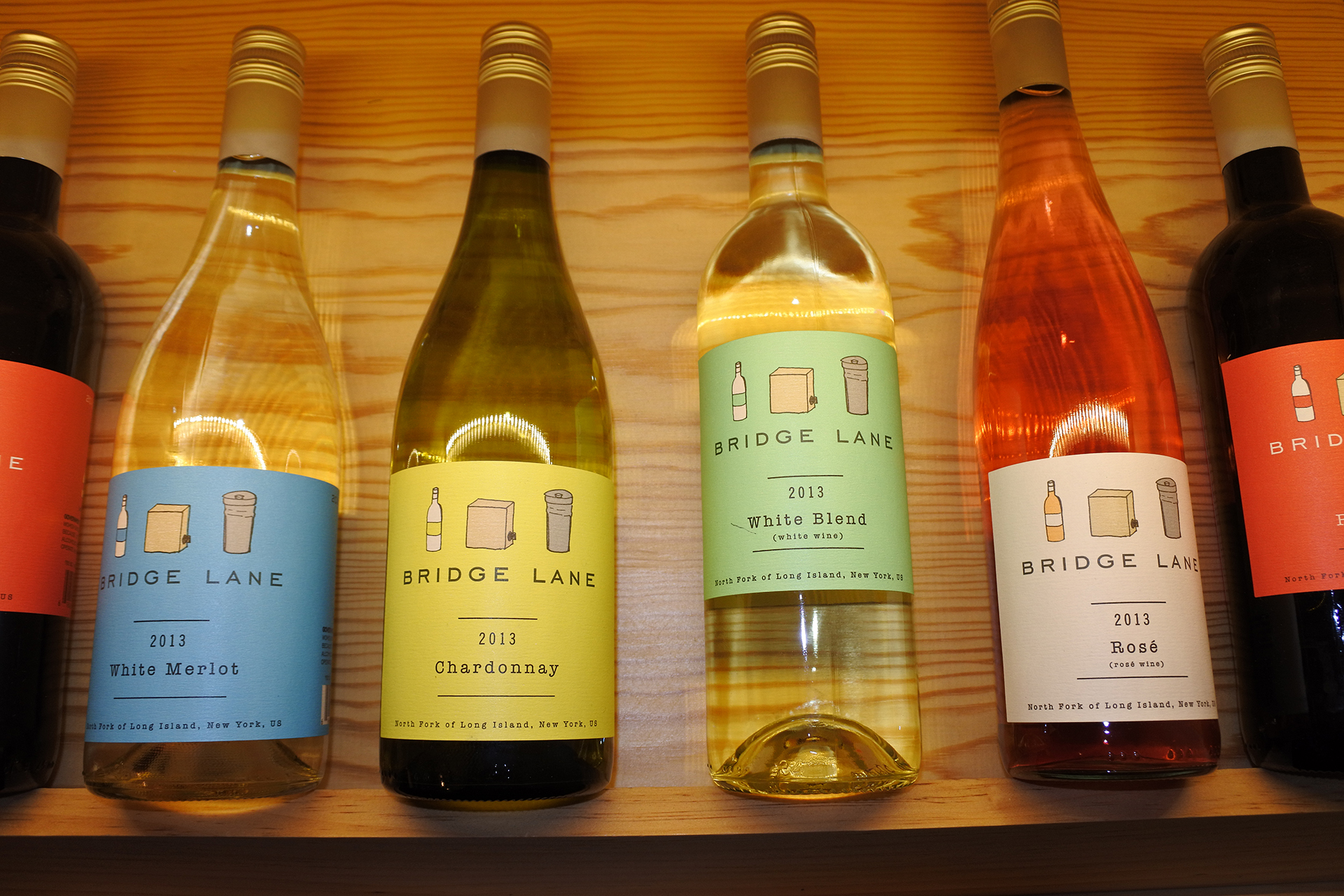
Shot in available light with the kit lens at its widest focal length (27mm full-frame equivalent), the VR system handled the 1/60th shutter speed with ease in this food porn shot.
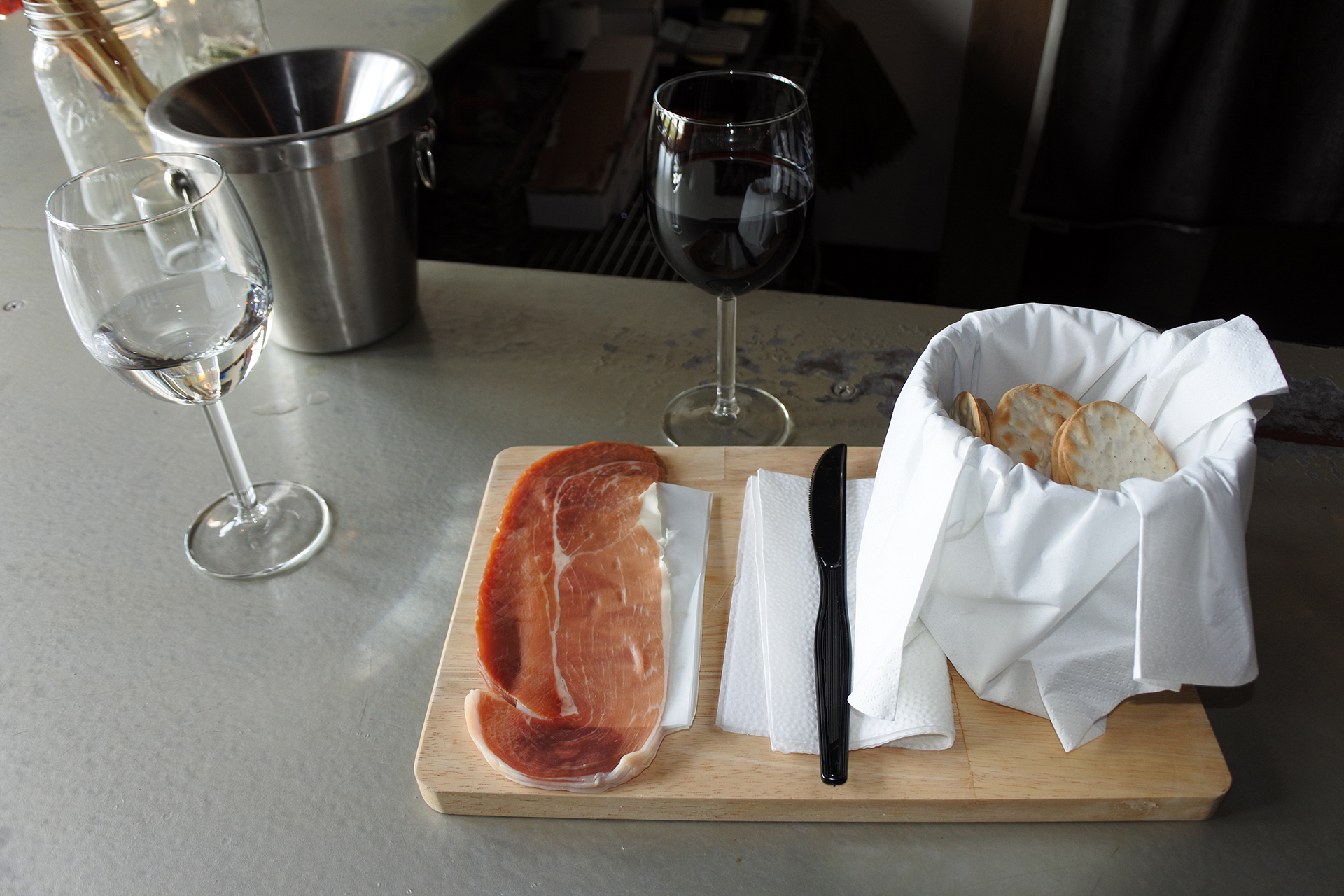
Autofocus and Speed: Impressive Indeed
One of the most impressive aspects of the J5 is its ability to capture fast action, including a child running the bases. Using Nikon's 32mm (86.4mm equivalent) f/1.2 prime lens, the camera captured almost every stride with sharp focus and great color.
MORE: Best Mirrorless Cameras From Beginner to Pro
The J5 features a very effective Hybrid Autofocus system, with a combination of 105 phase-detection and 66 contrast-detection autofocus points on the sensor. At no time did I have any issues grabbing focus, no matter what the subject, whether it was blooming flowers or running kids.
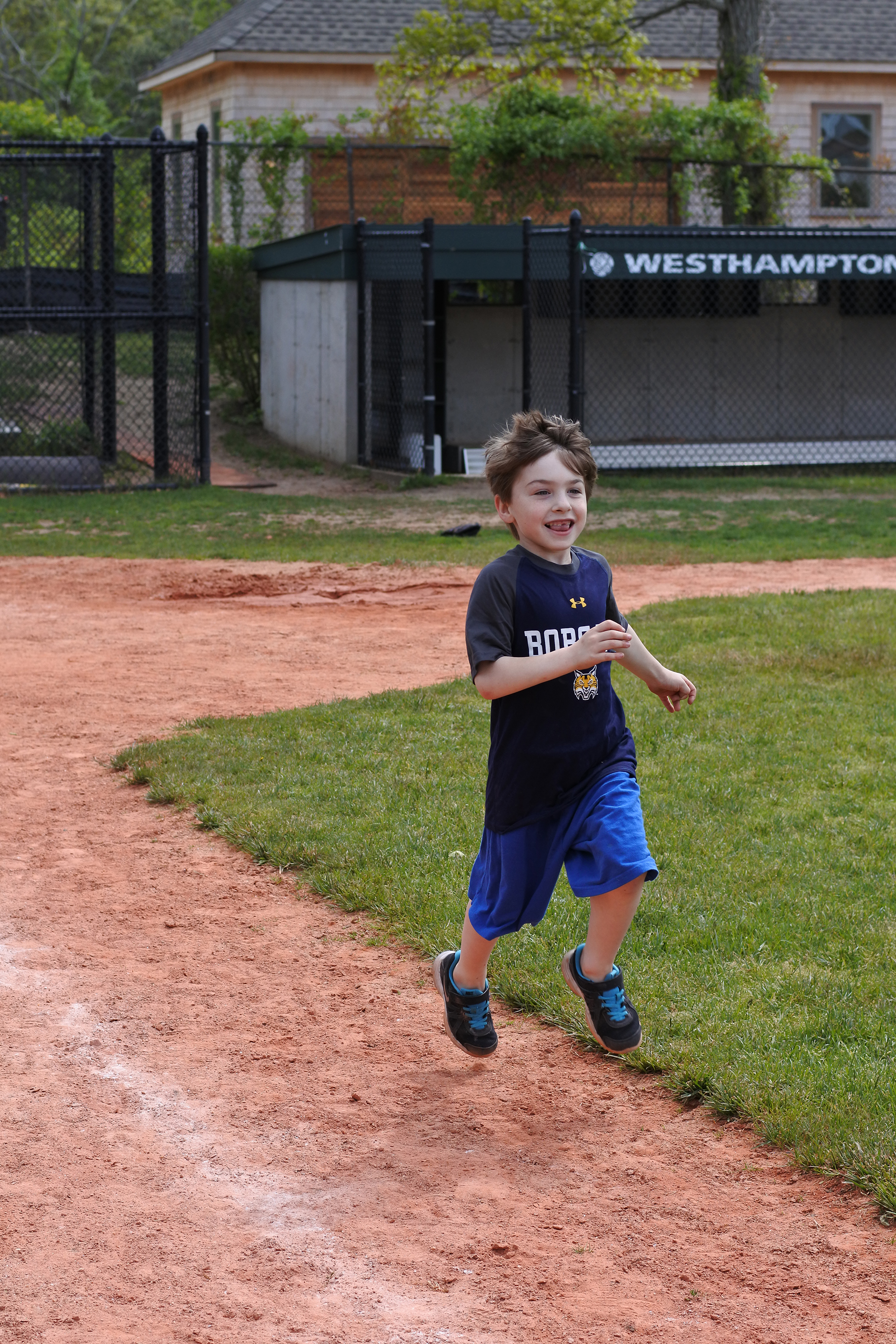
Where the J5 really shines is capturing moving subjects, no matter if it's a 7-year-old running to first base or a boat gliding along the water.
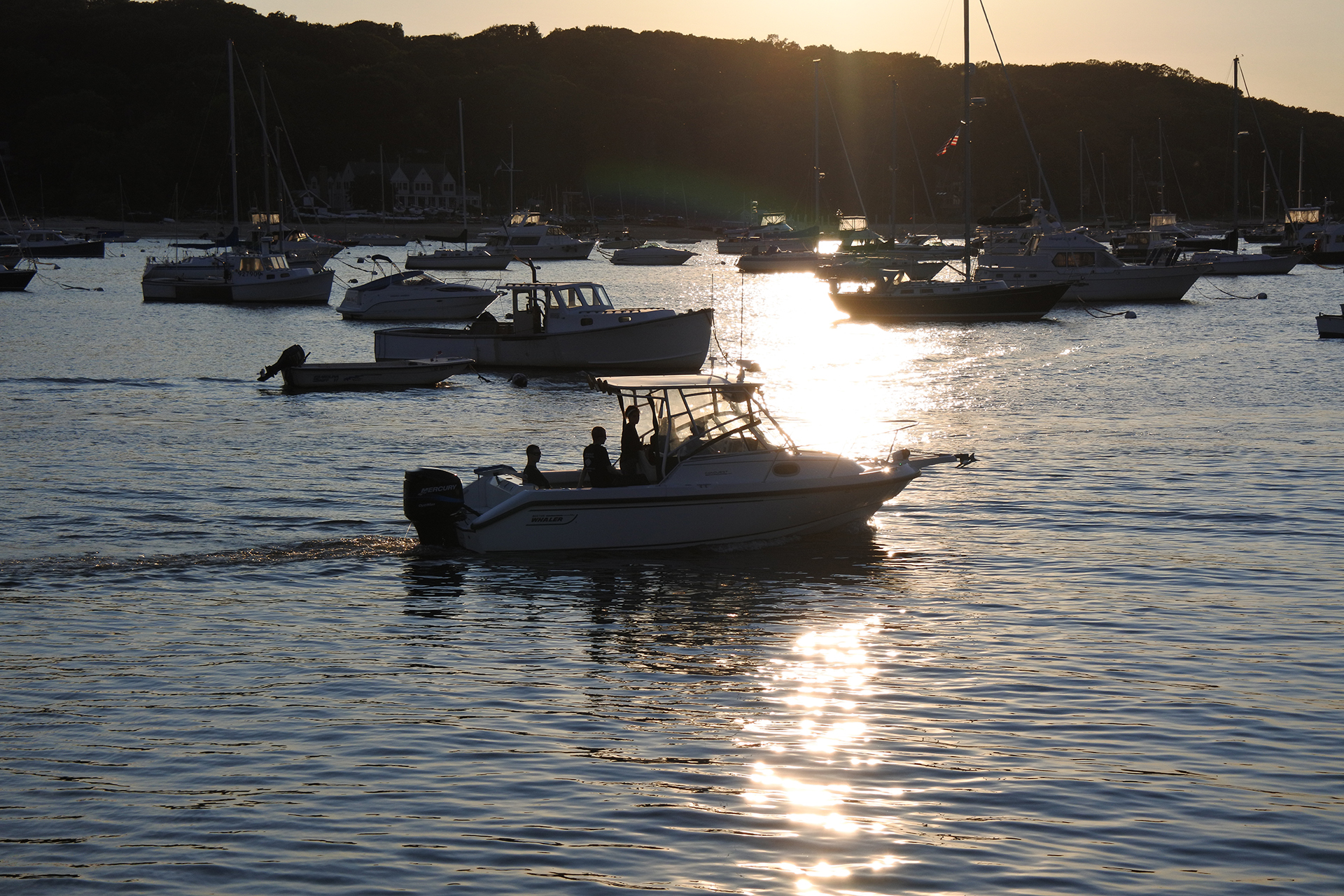
Unlike other cameras that can take long bursts of 10 fps with very few keepers, the Nikon can do 20, and all are in focus. You can't ask for more than that. However, after each 20-shot burst, the camera has to stop for a few seconds to save the images to the card. After, it's ready for another round. Results were excellent. This GIF made from burst shots shows the consistent sharpness in each photo.
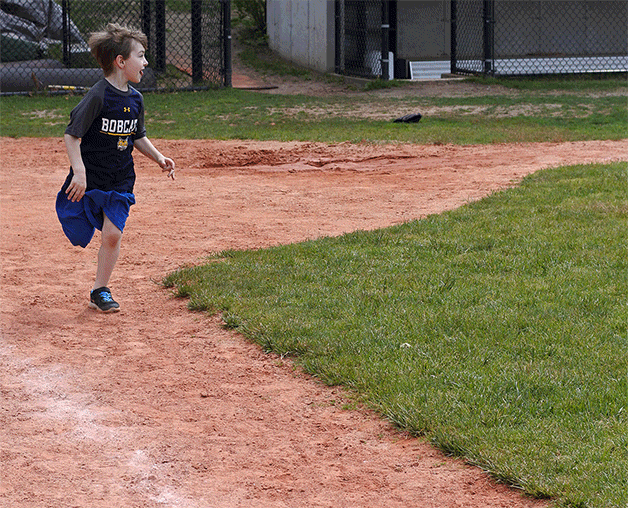
Video Quality: A Major Improvement
Movie quality has taken a big step forward with the J5. Nikon has upped the top frame rate from 30 fps to 60 fps at 1080p HD resolution. Also new is 4K/Ultra HD video at 3840 x 2160 resolution, but only at 15 fps. Think of it more in terms as being GoPro quality versus a Samsung NX1 mirrorless camera. Still, it gives you a taste of 4K. The colors were a bit richer than 60p, but — no surprise — motion was not quite as smooth.
Overall, videos looked good, but not great. Color was accurate, but autofocusing wasn't sharp at all times, and the vibration reduction system wasn't as robust as other camera makers'. This is to be expected, as the J5 uses electronic image stabilization for videos rather than the optical stabilization it uses for stills.
What can be more idyllic than a family of swans gently moving over the pond? Taken at Full HD resolution (1080/60p), motion is fluid and colors are spot-on.
Don't expect miracles from a $500 camera using a smallish sensor, as there were some focusing problems (grabbing) with interior shots such as in this theater. That said, when you're outdoors, you'll be happy with the results.
Controls: A Helpful Touch Screen
The J5 has controls befitting its small size and intended audience (such as new parents and those looking to move beyond a point-and-shoot or smartphone choice). The buttons and keys are clearly labeled; the menu is linear and easy to follow. Since the camera also has a touch screen panel, you can tap it in combination with the keys to make the adjustments you'd like, even tapping the screen to snap the shutter on a specific focus point.
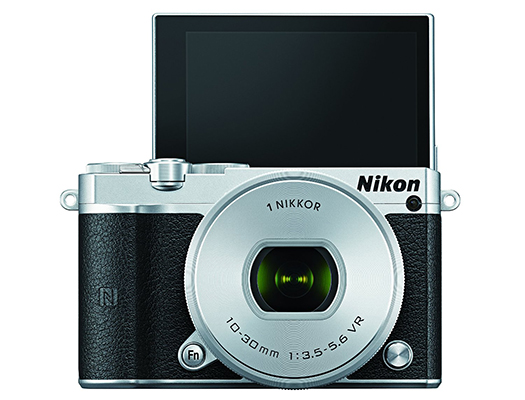
Because no camera is complete without the ability to take selfies — or so it seems — the J5 has a tilting, 180-degree 3-inch LCD. Flip it up to face you, tap the screen, and you can add to your Kardashian-style collection. It's very convenient and a better implementation than the selfie mode of the recent Fujifilm X-A2.
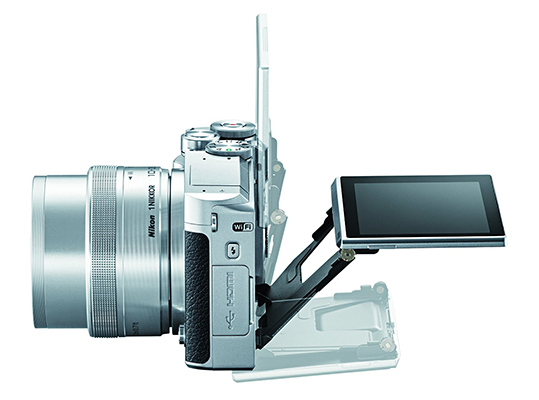
New to the J5 is an additional jog wheel on the top deck. Nearby is the main-mode dial with 10 shooting options — Smart Auto, Program AE, Aperture/Shutter Priority, Manual, Best Moment Capture, Motion Snapshot, Advanced Movie, Creative (for special effects and scene modes) and Sports. Overall, I found the camera easy to pick up and use. Still, it would be good to check out the supplied owner's manual to delve a bit deeper into such features as High Dynamic Range and what filters are available.
Also new are a Wi-Fi Direct key to more quickly access wireless options and a Menu button for access to settings. Last but not least, Nikon added a textured thumb rest on the back for better ergonomics.
Wireless: The Basics
As an upgrade from the J4, the J5 features Wi-Fi and NFC connectivity. Pairing with my NFC-equipped Samsung Galaxy S5 smartphone was quick and took just a few taps of the devices to each other.
MORE: Best DSLR Cameras From Beginner to Pro
The Nikon Wireless Mobile Utility app is very rudimentary, allowing you to transfer images between devices and trigger the shutter remotely. You can't change camera parameters via the phone other than exposure compensation. The J5 does not offer a way to collect GPS data from the phone and embed it in the image files, as some other camera companion apps can.
Battery Life: Slightly Substandard
The lithium-ion battery supplied with the J5 is rated at 250 shots by CIPA test standards, well below the spec of most mirrorless cameras (around 350). Less juice is to be expected, as the battery is smaller in order to fit the diminutive body. I used a lot of power-hogging features (flash, video, playback, Wi-Fi) and found that the J5 lasted a bit longer than expected, but it's definitely limited. If you plan on doing a lot of shooting and won't be near an outlet, a spare battery (around $30) would be a good investment.
Kit Lens: A Placeholder, Go for Better Glass
The J5's basic kit lens is a 3x zoom with a full-frame equivalent range of 27 to 81mm and max apertures of f/3.5 (wide) to f/5.6 (tele). It's very lightweight, and has built-in Vibration Reduction (VR) along with a built-in lens cover. However, it's not the sharpest lens, and it pales in comparison with the 3x zoom kit lens recently tested with the Fujifilm X-A2.
We also had the lightweight 30 to 110mm zoom that's part of the $750 two-lens kit (also f/3.5-f/5.6 with VR). I found it to be adequate, but without the sharpness of competitors, especially Fujifilm. In both instances, the vibration reduction minimized blur, but not as well as lenses from Sony and Fujifilm.
Lenses and Accessories
The Nikon 1 J5 features the Nikon CX lens mount, and the company has 13 lenses in its lineup covering most of the common focal lengths. I can attest to the vastly superior quality of the 1 Nikkor 32mm f/1.2 prime ($899), which Nikon supplied for the review. It's far sharper than the kit glass, with a much wider aperture, so you can nicely blur backgrounds with an attractive bokeh (the out-of-focus background effects often used for portraits).
The fact the lens alone costs $899 gives a big clue as to its quality. Realistically, most buyers won't pay this much for a single lens, but it just shows how well the camera can perform with better glass attached. Nikon also offers the FT-1 adapter, which lets you use classic Nikkor DSLR lenses on the Nikon 1 body.
Since the J5 does not have a hot shoe, the option for a more potent flash is off the table, as is an electronic viewfinder. The built-in flash suffices in most cases, but you won't be using this camera for fashion shoots. Note that the LCD was easy to see even in bright sunshine, once the display brightness was cranked up to the maximum (+3), so an add-on EVF isn't really necessary.
Bottom Line
Nikon is to be commended for greatly improving the photo and video quality of the Nikon 1 series. The new $500 J5 is the first camera in the lineup I wholeheartedly recommend. This is a great camera for parents with children, as it really does a great job capturing frenetic kids in motion — or other fast-moving subjects. It's easy to use, a vast improvement over the majority of compacts and opens a world of advanced adjustments and interchangeable lenses. Your pictures and movies will look much better.
The $500 kit price is reasonable, but I'd prefer a less expensive body-only configuration so you could add your own lens, especially that sweet 32mm prime.
Key Specs
Model Name: Nikon 1 J5
Megapixels: 20.8
Type: Mirrorless
List price: $500 with 10 to 30mm VR kit lens, $750 with 10 to 30mm VR and 30 to 110mm VR lenses, $900 with 10 to 100mm VR lens
Shots per second: up to 20 fps for 20 shots
Sensor Type: Backside Illuminated CMOS (13.2 x 8.8mm Nikon CX format)
AF Points: 171 Hybrid AF (phase detection and contrast detect), 41 points Auto Area AF
Screen: 180-degree tilting 3-inch touch screen
Shutter Speed Range: 1/16,000-30 sec., Bulb
ISO Range: 160-12,800
Main Video Resolutions/frame rates: 1920 x 1080/60p, 1920 x 1080/30p, 1280 x 720/60p, 3840 x 2160/15p (4K)
Video file format: .MOV H.264/MPEG-4
Built-in flash: Yes
Hot shoe: No
Card type: single slot, microSD, microSDHC, microSDXC
Ports: Hi-Speed USB 2.0, HDMI Type D
Shots per charge (CIPA): 250
Wireless Capabilities: Wi-Fi, NFC
Image Stabilization: in kit and other lenses
Dimensions and weight: 3.9 x 2.4 x 1.3, 9.4 ounces with battery and memory card
- DSLR vs. Mirrorless Cameras: Which Is Better for You?
- How to Take Great Photos with a DSLR or Mirrorless Camera
- Our Favorite Cameras for Casual Photographers
Follow David Elrich @davidelrich. Follow Tom's Guide at @tomsguide, on Facebook and on Google+.
